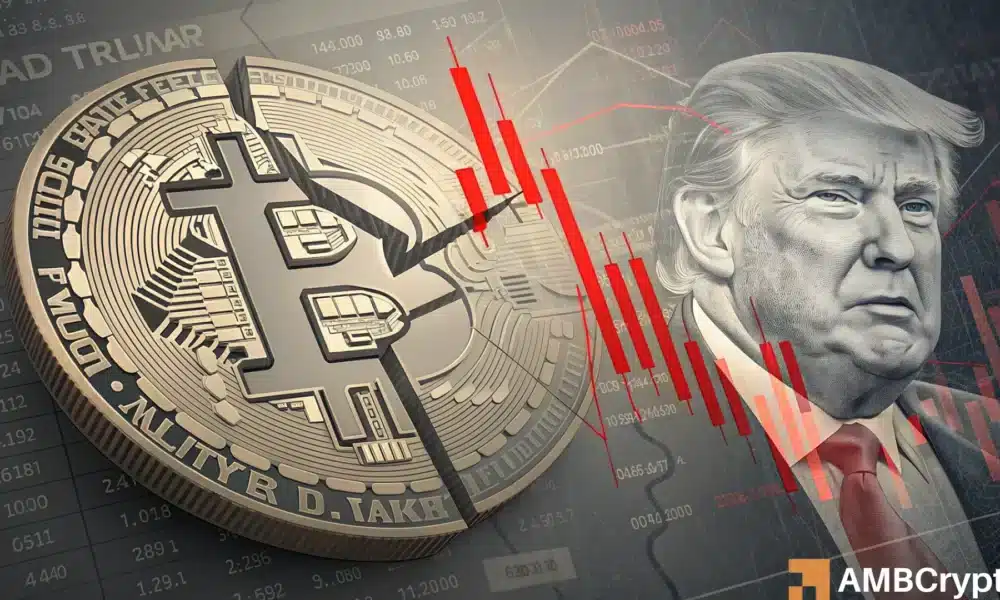Understanding the Recent Crypto Market Crash: Key Insights and Analysis
The cryptocurrency market recently faced an unprecedented setback, characterized by a historic wave of liquidations totaling over $19 billion. The catalyst for this dramatic downturn was a surprise announcement from President Trump imposing a 100% tariff, which sent shockwaves through the market. Coupled with a well-timed short position taken by a significant crypto whale, this event set the stage for the largest leveraged wipeout in crypto history, showcasing the fragility and speculative nature of the current market environment.
The $19 Billion Liquidation Tidal Wave
On October 10th and 11th, the global crypto markets experienced a catastrophic liquidation event that wiped out over 1.6 million traders. The immense scale of the $19 billion liquidation occurred within hours and was primarily driven by an influx of over-leveraged positions. According to reports, platforms like Hyperliquid saw the liquidation of more than $10 billion in long positions. Investors had been riding speculative gains in both Bitcoin (BTC) and various altcoins, but this sudden downturn dismantled weeks’ worth of market confidence and profit. The wave of liquidations underscored how susceptible the market is to rapid changes in sentiment exacerbated by low liquidity during weekends.
The Role of High Leverage in Market Vulnerability
Liquidity was a crucial factor contributing to the abrupt price drop. With many traders highly leveraged and the market operating on low liquidity, the conditions were ripe for disaster. A single political announcement was all that was needed to trigger a cascade of liquidation orders, demonstrating the extreme sensitivity of crypto assets to market shocks. The speculative fervor that had driven traders to take outsized positions evaporated almost overnight, leaving many investors reeling. This event serves as a cautionary tale about the dangers of excessive leverage and the importance of risk management in volatile markets.
Indicators of Market Sentiment: Profit vs. Capitulation
As the dust settled from this chaotic liquidation event, market observers began to analyze whether Bitcoin had truly hit its bottom. Current metrics suggest that a complete capitulation has yet to occur, as the Net Unrealized Profit/Loss (NUPL) remains around 0.51. This figure indicates that many investors are still in profit, which is often a sign that fear hasn’t fully set in yet. In past bear markets, such as those observed in March 2020 and November 2022, the NUPL metric dipped below zero, signaling that investors were deep in losses and that a complete capitulation was underway. This time around, however, the market appears to be experiencing more of a mechanical panic rather than an emotional surrender.
The Role of Exchanges in Market Stabilization
Despite the chaos, platforms like Binance played a surprisingly stabilizing role during the liquidation storm. Data revealed that whales were actively moving their funds and increased inflows occurred just prior to the crash, indicating a calculated risk reset among seasoned investors. Binance’s spot trading volume surged to $12.6 billion, helping absorb some of the selling pressure. While this intervention led to a cleaner market structure, it also indicates that the emotional reset necessary for a true market bottom has not yet taken place. In essence, the actions taken by exchanges can help provide temporary relief but do not substitute for broader market sentiment change.
What Lies Ahead for Bitcoin and Crypto Markets?
Looking forward, there remains a prevailing uncertainty about whether Bitcoin and the broader crypto market have indeed reached their true bottom. Historical patterns suggest that sustained recovery may still be contingent on a deeper panic that drives the NUPL metric down further. As long as the NUPL remains positive, suggesting that many investors retain confidence, it’s plausible that further downside could be imminent. The current optimism could potentially lead to another dip before a more robust recovery takes hold. Therefore, market participants should remain vigilant, keeping an eye on sentiment and leverage levels to navigate the evolving landscape effectively.
Conclusion: Navigating the Next Steps in Crypto
In conclusion, the recent $19 billion liquidation event serves as a reminder of the inherent volatility and risks associated with cryptocurrency trading. The announcement of tariffs from President Trump was a shock to the system, amplifying the fragility within the market, primarily driven by highly leveraged positions and speculative trading. As we glance towards the future, understanding market sentiment will be critical in determining whether the current downturn is a fleeting moment or merely a precursor to more extensive challenges. Investors should tread carefully, armed with a nuanced understanding of market indicators, to navigate this tumultuous phase in the cryptocurrency realm.
















